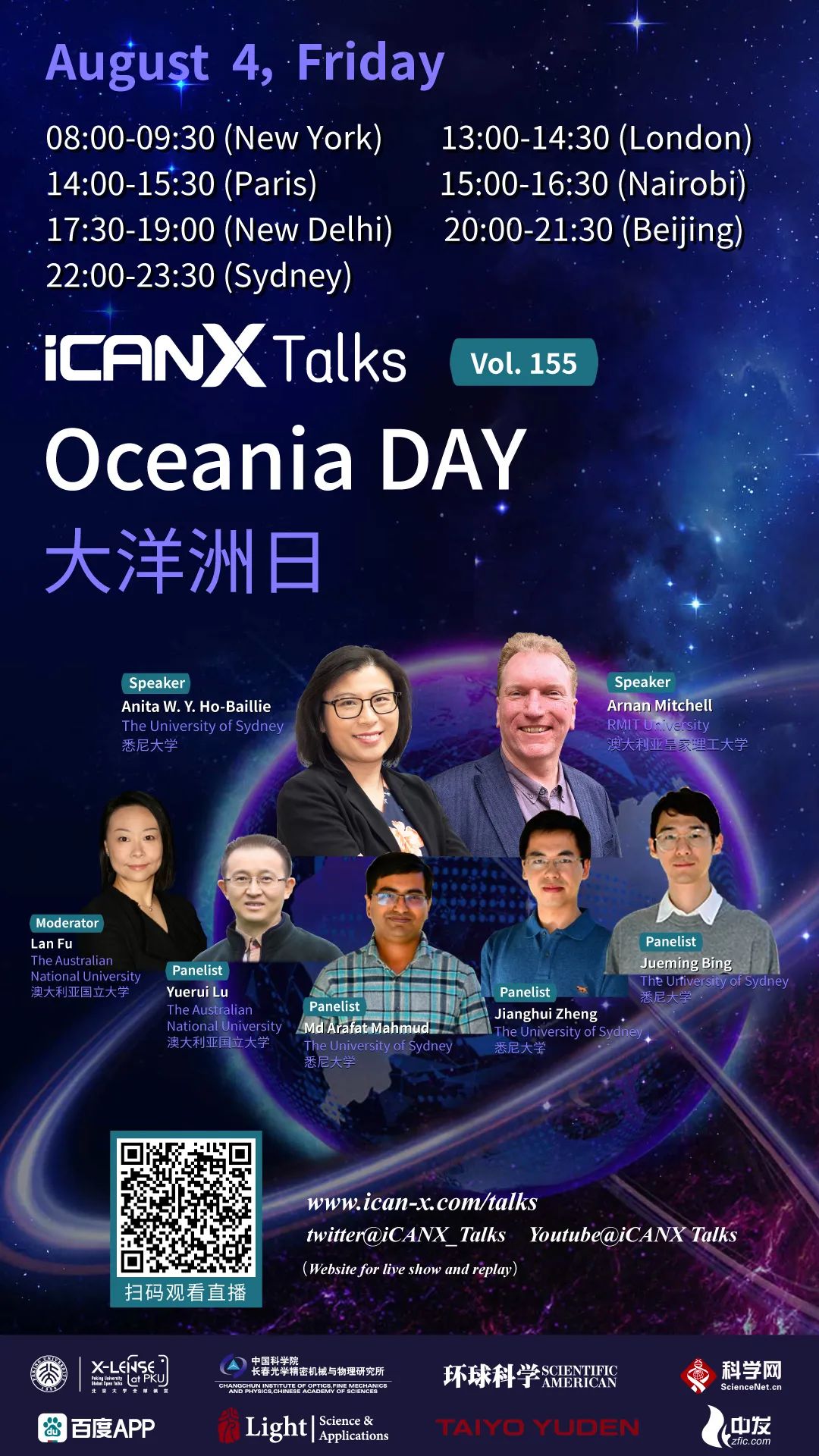Speaker: Anita W. Y. Ho-Baillie, The University of Sydney
Time: 20:00-21:30 p.m., August 4, 2023, GMT+8
Venue: Scan the QR code to watch online
Abstract:
Solar cell that converts solar energy to electricity is one of the cheapest electricity production technology, due to the rapid cost reduction in the last decade. The incumbent silicon solar cell technology is approaching its power conversion efficiency limit (29%), new approaches are needed to increase the efficiency for further cost reduction.Multi-junction or tandem solar cells involve the stacking of high bandgap solar cells onto low bandgap solar cells for them to work in tandem, each converting light in the “sectioned-solar-spectrum” to electricity more efficiently. Multi-junction tandem cell concept is promising in delivering higher efficiencies given the efficiency limit for double junction solar cells is ~45% and for triple-junctions, ~51%. Multi-junction tandems According to the most recent photovoltaics industry roadmap ITRPV (2023), it is projected that Si-based tandem solar cells will become part of the photovoltaic technology mix starting in 2027.Perovskite solar cell technology has the performance credentials and the ease of fabrication to be a candidate for tandem solar cells. Perovskite-based tandem cell research has attracted immense amount of interest in the last 6 years and has experienced a very rapid rate of improvement in energy conversion efficiency.In the talk, I will present our research at the University of Sydney that include demonstrations of various bandgap perovskite solar cells and various type of perovskite tandem solar cells and their applications in the wider context. I will touch on our strategies for improving their stability and durability.
Biography:
Anita Ho-Baillie (何穎兒) is the John Hooke Chair of Nanoscience at the University of Sydney, an Australian Research Council Future Fellow, and an Adjunct Professor at University of New South Wales (UNSW). She completed her Bachelor of Engineering degree on a Co-op scholarship in 2001 and her PhD at UNSW in 2005. Her research interest is to engineer materials and devices at nanoscale for integrating solar cells onto all kinds of surfaces generating clean energy. She is a highly cited researcher from 2019 to 2022. In 2021, she was an Australian Museum Eureka Prize Finalist and was named the Top Australian Sustainable-Energy Researcher by The Australian Newspaper Annual-Research-Magazine. She won the Royal Society of NSW Warren Prize in 2022 for her pioneering work in the development of next generation solar cells.
Source: iCANX
